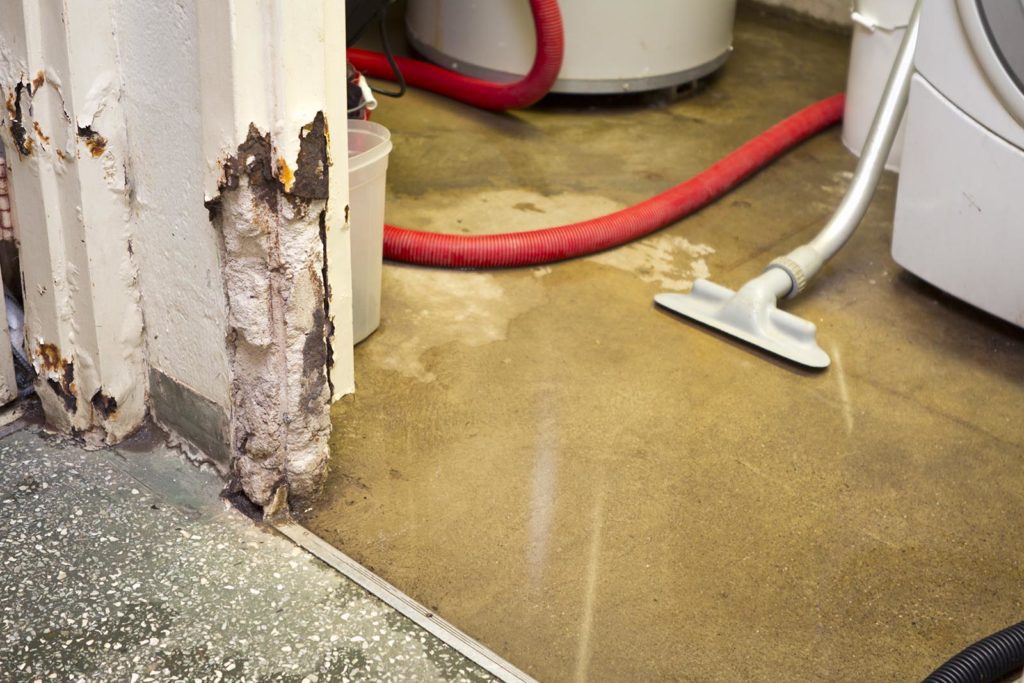If you experience a sanitary sewer backup in your home or business, here’s what to do, how to handle the mess and ways preventing future sewer backups in your basement or lateral.
What to do in the event of a sewer backup
- Stop running the water and report the backup immediately.
- Call your municipality’s operations division to notify them.
Stay safe!
- Beware of electrical and shock hazards. If there is standing water in your basement, contact your local utility company or a licensed electrician before entering.
Alliant Energy: 800-255-4268
Madison Gas & Electric: 608-252-7111
- Do not use any electrical equipment while standing in water.
- Wet surfaces can be slippery. Use caution when entering basement after power is off.
- Cleaning solutions can be hazardous or even fatal if misused; read and follow all directions on cleaning product containers.
- Never mix cleaning products.
- Work in a well-ventilated area.
Guidelines for handling sewer backups
As the backup is happening
Do not use water in your home. Any water you send down a drain will go into a backed-up sewer pipe and discharges into your basement.
Preventing disease
- Keep children and pets out of the affected area until it is properly cleaned and disinfected.
- Avoid contact with raw material. Wear protective gloves and boots. Goggles are recommended.
- Make sure to wash with warm, soapy water.

How to clean up
- Once the drain starts flowing again, remove all water and sewage as quickly as possible. Extracted wastewater must be disposed of in the sanitary sewer system. Septic pumping services or flood restoration companies will properly dispose of the wastewater. Alternatively, you can wait for the sewer to drain your basement.
- Hose down the affected area, then wash surfaces with hot, soapy water.
- Disinfect surfaces with a solution of one part household bleach and 10 parts water.
- Dispose of or properly wash and disinfect contaminated objects.
- Use fans and/or a dehumidifier to properly dry the area. Do not use heat to dry closed interior spaces; mildew and expanded water damage may result. Fully drying an area can take weeks. If you are using fans, open windows to help air out the area.
When you are finished
- Wash yourself thoroughly
- Wash and disinfect any clothing and supplies immediately after use.
protect against future backups
- Install a back-water valve. For more than 50 years, the plumbing code has required that a backwater valve be installed as part of the floor drain, but older homes may not have one. This device prevents wastewater from entering your home through the building’s service connection to the sanitary sewer main. Contact a local plumbing company regarding installation.
- Maintain your existing backwater valve. The valve is a flapper or ball which will often stick open because of a build-up of solids, corrosion or other debris unless it is inspected and maintained at least semi-annually.
- Maintain your sanitary sewer lateral; this is the connection between your home and the street, and is the property owner’s responsibility. It is not unusual for sediments, roots, grease and other things to plug a lateral; consider having it cleaned and inspected every few years.
- Ask your insurance agent about coverage. Sewer backups are generally not covered by standard homeowner or renter insurance policies. Affordable coverage is often available as an endorsement.
The process after an emergency call
The municipality’s emergency maintenance crew will first check the public sewer main. If the public main is blocked, the crew will remove the obstruction to restore service. The crew will notify the property owner or resident when service has been restored.
If the public main is operating normally, indications are that your private building sewer is the cause of the sewer backup. The emergency crew will notify the property owner or resident.
If a blockage in the private building sewer is the cause of the sewer backup, it is the responsibility of the property owner to clear the blockage. There are various private firms (search for “sewer cleaners”) that are equipped to remove the blockage from the private building sewer. Check if your municipality requires contractors to be licensed and pre-qualified to work in the public right-of-way.
If these actions to remove the blockage from the private building sewer are not successful, it is possible that the private building sewer has collapsed. The property owner or resident is urged to again contact their municipality to determine what further measures may be taken to re-establish sewer service. In some instances, the entire sewer lateral within the right-of-way may have to be replaced. The owner is responsible for contracting with a contractor to make the repair(s).
If a contractor is used, the property owner is responsible for paying the contractor directly for services. It is recommended that property owners require contractors to televise the sewer lateral and provide a video before agreeing to have the lateral repaired.
Water in basement but not sewage?
If you have water in your basement but it is not wastewater, most likely you do not have wastewater problem, but rather a stormwater drainage problem often referred to as a “wet basement.”
- Use hoses and pumps and pump water into yard.
- Avoid allowing water drain into your floor drain. This will overwhelm the sewer.
- Use dehumidifier and fans to dry out basement area.
- Depending on how extensive the flooding in your home is, lift or remove carpet in flooded area.
- Check your gutters. Gutters that are improperly installed or full of debris, will cause storm drainage to collect in a basement.
- Install extensions on gutters to drain water away from the foundation of your home.
- Check your sump pump system. A reminder: sump pumps associated with foundation drains can not discharge to plumbing or drains in the basement. They must discharge outside.







